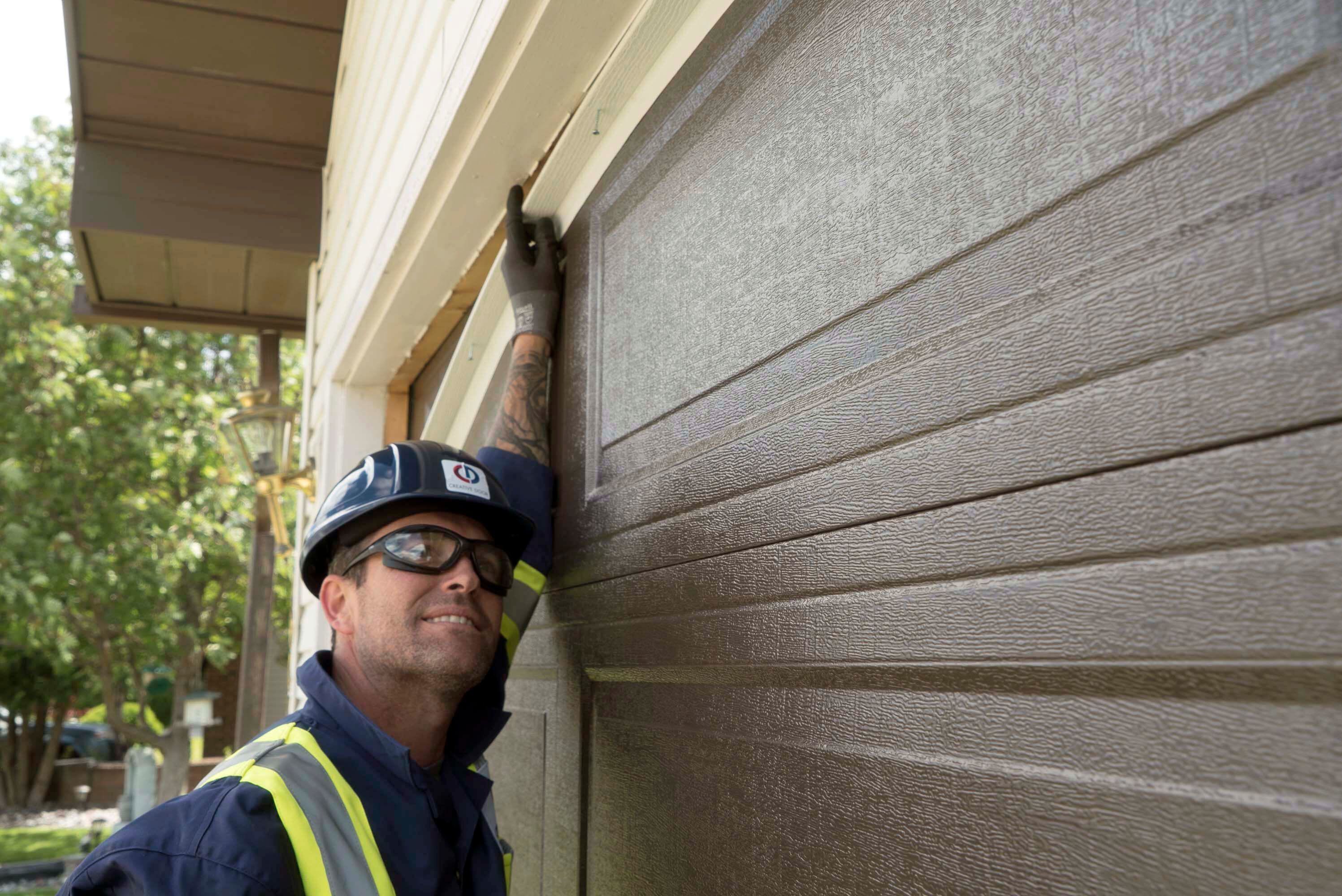U-value vs. R-value: A Guide to Choosing Insulated Garage Doors
If you’re struggling to lower your home’s energy costs, your garage may be the culprit. An attached garage that’s on the chilly side can make it hard to keep adjoining rooms comfortable without driving up your heating bill, as the cold air passes through the walls and makes your heating system work harder. And, if there’s a bedroom or office above the garage, the mass of cold air under the floor makes it challenging to keep the space heated properly.
Why you should care about garage door insulation
An insulated garage door helps regulate the temperature in your garage, meaning your heating system doesn’t have to work as hard to keep your home comfortable. It’s a big energy saver, but there are other advantages as well.
- It’s strong. An insulated garage door is more robust and durable than an uninsulated one. Insulated doors contain polyurethane or polystyrene insulation sandwiched between steel panels. These three layers of tightly packed, durable materials make insulated doors highly resistant to denting and general wear and tear.
- It protects your car and your possessions. If you use your garage to park your car or store your things, an insulated door is a must. Cars can be damaged by freezing temperatures, as can a variety of things people store in garages, such as yard work equipment and bicycles. An insulated garage can help extend the lifespan of your car’s engine and keep your other possessions safe.
- It operates quietly. Unlike many uninsulated garage doors, insulated doors don’t rattle when they open and close. They operate smoothly and quietly.
How should you choose the right insulated garage door? There are two values to take into account: R-value and U-value. Both of these figures provide a rating of a garage door’s thermal efficiency, but in different ways. Understanding that difference is crucial to making the right choice.

Understanding R-value–Rate of Heat Loss
R-value is the most common measurement for insulation in garage doors. It tells you how effective a particular insulation material (such as polyurethane or polystyrene foam) is at preventing heat loss. The higher the R-value, the better the thermal efficiency of the material.
One thing that’s important to understand about R-value is that it measures the thermal efficiency of a specific material, not of your garage door as a whole. Garage door manufacturers typically measure a door’s R-value at the centre of the panel, where the insulation is thickest. Since the frame, hardware, and seals don’t insulate as well as the panel, the entire garage door may have a lower insulation rating than what the R-value suggests.
It’s also worth noting that an R-16 value, for example, isn’t twice as insulating as an R-8 value. A material with an R-16 value reduces heat loss by 95%, and a material with an R-8 value reduces it by 90%. So, the disparity isn’t as great as the numbers may suggest.
Understanding U-value – Rate of Heat Transfer
U-value is less commonly used by manufacturers. However, it’s arguably the more accurate measurement of a garage door’s thermal efficiency.
R-value measures the rate of heat loss, but U-value measures the rate of heat transfer. It also has the important advantage of measuring the thermal efficiency of the door itself. Whereas R-value only measures the thermal efficiency of the insulation material, U-value measures the thermal efficiency of the door as a whole, including frames, panels, hardware, and seals. A U-value rating factors in how quickly heat passes through the primary material, insulating foam, and metal hardware. In addition, it takes into account how much heat escapes due to air leaking out around the edges of the garage door.
To put it simply, U-value gives you a more precise measurement of your garage door’s thermal efficiency.
Why is R-value much more common?
The reason R-value is the standard is because while U-value is more precise, it has something of a marketing problem. U-value ratings range from 0 to 1 and, contrary to R-values, a lower number indicates a higher efficiency. While it’s easy for consumers to see that R-20 is better than R-10, understanding that 0.05 is better than 0.10 takes a bit of work. It’s also counterintuitive to many of us that smaller numbers indicate something positive. Finally, decimals are less marketable than whole numbers.
While garage door manufacturers tend to favour R-values, there’s a definite trend toward embracing U-values. The next time you buy a garage door, it’s definitely worth seeking out this information.

Browse a wide selection of insulated garage doors available in Western Canada
Are you looking for an insulated garage door that can handle our Canadian winters? Creative Door offers you the best makes and models and provides quality installation and repair work. For more information, contact our team today or visit one of our eight branches across Western Canada!

